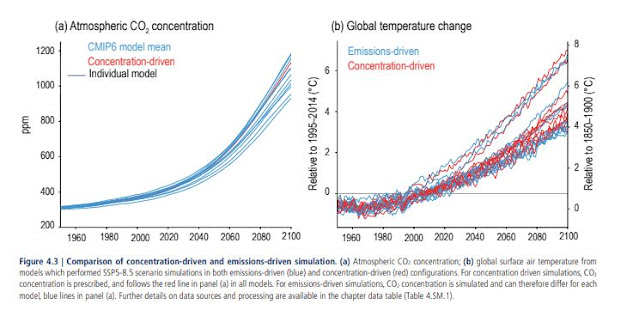Over the past 12 months the Intergovernmental Panel on Climate Change (IPCC), the UN climate change research office, has in stages released its Sixth Assessment Report (AR6) on global climate. The report is broken down into three volumes: (1) The Physical Science Basis; (2) Vulnerabilities and Impacts; and (3) Adaptation and Mitigation. A fourth report, the synthesis of all three volumes, will be complete in late 2022 or early 2023.
Temperature changes between glacial and interglacial periods.
IPCC AR6 global temperature model to 2100.
IPCC AR6 global CO2 and temperature change models to 2100.
IPCC AR6 global models for temperature, precipitation, September Arctic sea ice extent and mean sea level to 2100.
IPCC AR6 September Arctic sea ice extent model to 2100.
IPCC AR6 ocean surface pH model to 2100.
The combination of these factors and more: higher temperatures,
winters diminishing, shoulder seasons (spring/fall) being compressed into what used
to be winter; greater and more violent precipitation; dramatically warming and
acidifying oceans; loss of ice around the world; in some cases amplify each
other in vulnerable zones such as coasts and low-elevation areas like river
basins. Eustatic (global) sea level rise will also affect river levels and
their local and regional ecosystems. System response to the complicated effects
of global warming will be likewise complex and far-reaching.
Tomorrow: IPCC AR6 Vulnerabilities and Impacts.
Be brave, be steadfast, and be well.







No comments:
Post a Comment